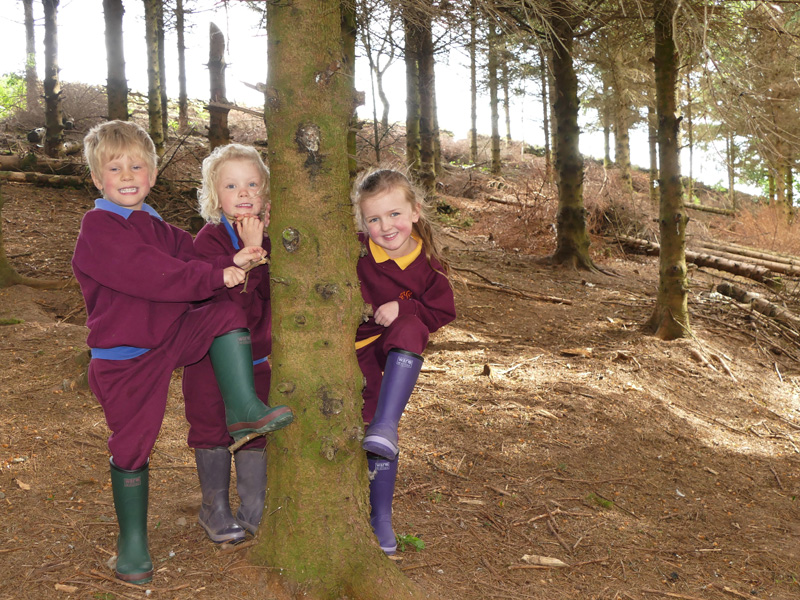.jpg)
Outdoor learning and Forest Schools - what is it all about?
Kid’s outdoor learning is a great way to start educational life. Outdoor spaces are not always on the doorstep, so Forest Schools, Montessori Schools and nurseries with outdoor learning activity focus can be really important when you don’t have lots of green space. We work with a great many outdoor focused schools because little ones spend such a lot of time outdoors and schools (and parents) really value great wellies that are warm, durable, and super comfy to wear outdoors for long periods of time.
What’s more, schools and nurseries can offer parents 10% discount if they contact us to organise a unique school discount code.
Why do people choose Forest Schools and schools with outdoor learning?
Nurseries are nurturing and social environments, but forest schools and schools with outdoor learning programmes also have a huge focus on confidence, nature, and more free learning experiences. There is a school of thought that children are different in different weather conditions, perhaps because they can observe the seasons change and immerse in different activities throughout the year. Outdoor focused little ones are often more robust and more risk taking because they know that falling in the mud is not the end of the world and is often fun!
Why do parents choose Warm Wellies?
1. The number one reason is that they are warm, comfy and robust. Kids Warm Wellies are lined with neoprene, which is used for wetsuits and is known for being less sensitive to temperature changes than PVC or rubber, which can become brittle in cold weather and sticky in hot weather.
2. The second reason is that they are durable, often getting handed down to siblings, making them even better value. Robust soles and extra lining in the heel area mean they don’t wear out and become uncomfortable like some lined wellies.
3. Thirdly, with the school discount code, teachers and parents can get 10% off all standard-priced wellies – and it's not just kids' wellies - it includes wellies for adults too.
Is a Forest School the same as Montessori?
No, it’s not - the Montessori method does not have to be outdoor-focused; instead, they try to initiate learning based on the child’s natural will and abilities, encouraging them to make choices under their own volition. Montessori is a resource-rich environment, and children are set a task by a teacher, but with little guidance. The idea is that they become more self-taught and confident. Forest Schools have more fluidity, with less focus on schooling subjects and more on the teamwork, problem solving, and observation skills that are vital to form from a young age. There are a few Montessori Forest Schools, where children will experience of the Montessori teaching approach, but in a beautiful British outdoor classroom.
What is the history of Forest Schools?
The history of outdoor learning goes back to at least the 19th century and can be linked to a number of influential people in the 19th and 20th centuries, including the late Kurt Hahn, who founded Round Square schools such as Gordonstoun, with a key pillar being ‘environment’ and another being ‘adventure’. The 1940s saw the start of open outdoor education centres, but they didn’t take off in the UK until much later. Conversely, on the continent – and in particular, Scandinavia- outdoor education has been the norm for decades. In 1993 a team of Brits from Somerset went to Denmark and noted the ‘friluftsliv’ open-air education system. The team was fuelled with ideas and enthusiasm for outdoor learning and the child-centred learning methods, which was a completely normal way of life for the children in Sweden, Denmark, Finland, and Norway. Returning to the UK, it became the new norm for the group of children at Bridgewater, and the first Forest School was born. Since then, the concept has been remoulded around the children’s needs and has also adapted to ensure strong teaching standards are maintained. Regulations and qualifications have been brought in to maintain our high British teaching standards, with the following criteria in place:
- Qualified level 3 practitioners run the school.
- It is a long-term process with regular contact with a local wooded environment (preferably over the seasons).
- It follows a child-centred pedagogy where children learn about and manage risk. It has a high adult-to-child ratio.
- Observations of the learners are key to enabling the scaffolding of learning.
- Care for the natural world is integrated.

Where can I find a Forest School near me?
Although some smaller nurseries and local authorities do have groups run locally, which you can find on social media, there is a directory on the Forest School Association website.
